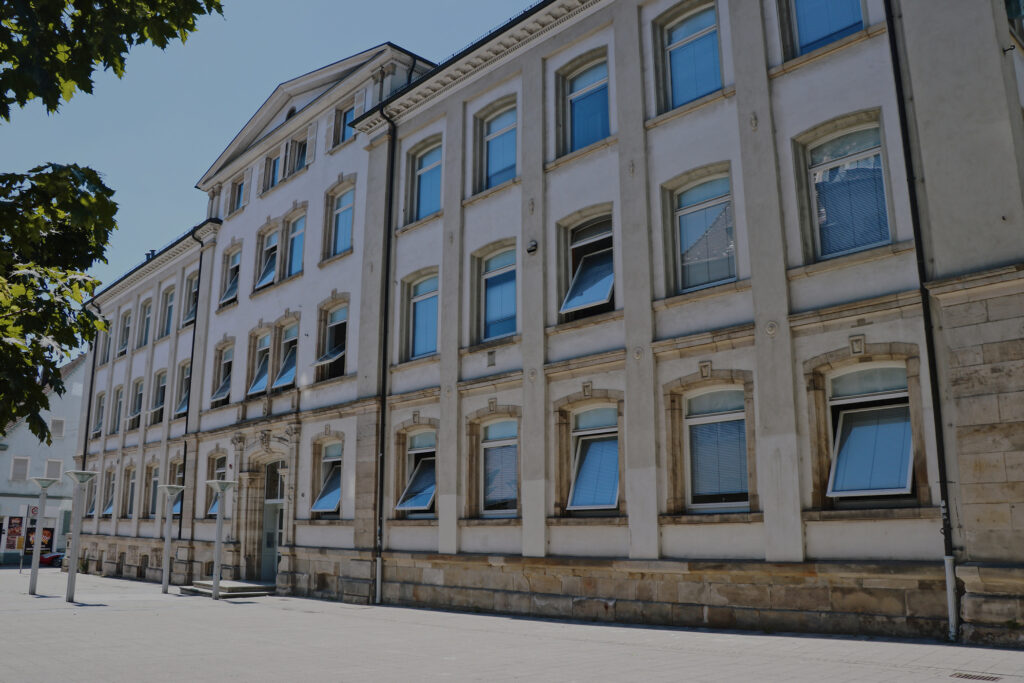Freihof
In the area where the Freihof Gymnasium stands today once stood the Freihof, possibly one of the early Alamannic settlement sites, alongside Ober- and Niederhofen, from which Göppingen eventually emerged. However, the Freihof is only mentioned in writing in 1477. The site was overlaid with a school building in 1874, the present-day old building of the Freihof Gymnasium. Therefore, it remains uncertain how far back settlement activity extends in this area.
The stone reliefs in the base of the old school building date back to the 1950s. They were created following a suggestion by the art educator Robert von der Heide and depict scenes from Göppingen’s history: from Württemberg’s takeover of Göppingen, the first May Day in 1650, the uprising of the Göppingen women in 1688, and the two city fires of 1425 and 1782, to the Göppingen citizen militia in the 1848 revolution, industrialization, the departure of soldiers at the beginning of World War I, and the return of prisoners of war from World War II.
We are now moving from the Freihof Gymnasium towards Burgstraße. Underneath the street surface, the remains of the city wall, which bounded old Göppingen to the north until the 19th century, are still buried. From 1870 onwards, the rapidly expanding city, fueled by industrialization, expanded beyond the abandoned city fortifications. In this area, the house of the Gutmann industrialist family was built in 1884, along with the synagogue in 1881 and the rabbi’s house of the Jewish community in 1880.

